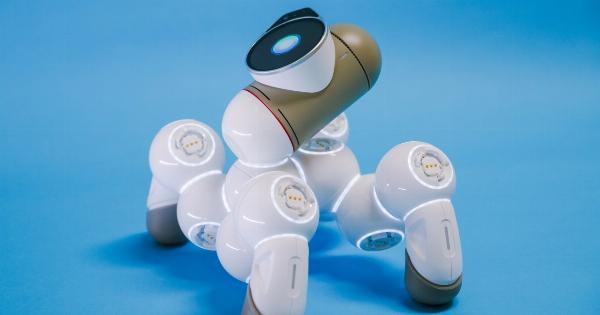Robotic surgery is increasingly becoming popular and is quickly replacing conventional surgical techniques. This is because robotic surgery offers numerous benefits, such as minimally invasive procedures and precision.
Robotic surgery achieves these benefits through the use of robotic arms that are operated by surgeons to perform surgical procedures. However, one of the limitations of robotic surgery is that it is not suitable for hard-to-reach or inaccessible areas of the body. In this regard, researchers have been exploring the use of diodes to make robotic surgery possible in such areas.
This article explores how diodes make robotic surgery feasible in hard-to-reach regions.
What Are Diodes?
Diodes are electronic components that allow current to flow in only one direction. Diodes function by creating a barrier that restricts the flow of electrons in one direction while allowing it in the other.
This property makes diodes useful in various applications that require current to flow in only one direction. Some of the applications of diodes include current rectification, voltage multiplication, tuning, and switching. The use of diodes in robotic surgery is an example of how diodes can be used in innovative ways.
How Diodes Make Robotic Surgery Feasible in Inaccessible Areas
Robotic surgery involves the use of robotic arms or surgical robots to perform surgical procedures. The robotic arms are operated by surgeons who use a console to control their movements.
However, the use of robotic arms is limited in hard-to-reach or inaccessible areas of the body. In such areas, the size of the incision required to access the surgical site is too small for the robotic arms to fit through.
To address this challenge, researchers have developed a new approach that involves using diodes to transmit light to the surgical site. The diodes are small semiconductors that emit light when an electric current flows through them.
By using diodes, surgeons can transmit light to the surgical site without the need for a large incision.
The use of diodes in robotic surgery involves the use of fiber-optic cables that transmit light from the diodes to the surgical site. Fiber-optic cables are made of glass or plastic fibers that are used to transmit light from one end to the other.
The diodes are connected to a power source that generates an electric current, which causes the diodes to emit light. The light is transmitted through the fiber-optic cables to the surgical site.
Once the light reaches the surgical site, it is used to illuminate the area. The illumination provided by the light allows surgeons to see and operate on the surgical site.
By using diodes, surgeons can operate on hard-to-reach or inaccessible areas of the body without the need for a large incision. This makes robotic surgery more feasible in areas where conventional surgical techniques are not suitable.
The Benefits of Using Diodes in Robotic Surgery
The use of diodes in robotic surgery offers numerous benefits. These benefits include:.
- Minimally Invasive: The use of diodes in robotic surgery allows for minimally invasive procedures. This means that patients experience less pain, have shorter recovery times, and have fewer complications.
- Precision: The use of diodes in robotic surgery allows for greater precision in the surgical procedure. This means that surgeons can operate with greater accuracy and reduce the risk of complications.
- Cost-Effective: The use of diodes in robotic surgery is cost-effective. This is because the procedure is less invasive, which means that patients require less postoperative care.
- Time-Saving: The use of diodes in robotic surgery saves time as it eliminates the need for large incisions. This means that surgeons can operate on hard-to-reach or inaccessible areas of the body without the need for lengthy procedures.
Challenges of Using Diodes in Robotic Surgery
Despite the benefits of using diodes in robotic surgery, there are some challenges that need to be addressed. These challenges include:.
- Compatibility Issues: There are different types of diodes, and not all diodes are compatible with robotic surgery systems. This means that surgeons need to ensure that they use diodes that are compatible with the surgical system they are using.
- Heat Generation: The use of diodes in robotic surgery can generate heat, which can be detrimental to the patient. Surgeons need to ensure that they use diodes that do not generate excessive heat during the surgical procedure.
- Cost: The cost of using diodes in robotic surgery can be high. This is because diodes are expensive, and their use requires specialized equipment.
- Training: The use of diodes in robotic surgery requires specialized training. Surgeons need to ensure that they receive adequate training on how to use diodes to perform surgical procedures.
The Future of Robotic Surgery Using Diodes
The use of diodes in robotic surgery is still in its early stages, and research is ongoing to explore its potential applications. However, there is no doubt that diodes will play a critical role in the future of robotic surgery.
With advancements in technology, it is likely that diodes will become smaller, more efficient, and more affordable, making them accessible to more surgeons and patients.
The use of diodes in robotic surgery has the potential to revolutionize surgical procedures. It will transform hard-to-reach or inaccessible areas of the body into accessible ones, thereby providing greater access to surgical procedures.
It will also make surgical procedures more efficient, cost-effective, and less invasive for patients.
Conclusion
The use of diodes in robotic surgery is an innovative approach that allows surgeons to operate on hard-to-reach or inaccessible areas of the body.
By using diodes, surgeons can transmit light to the surgical site, which allows for greater precision in the surgical procedure. The use of diodes in robotic surgery offers numerous benefits, including minimally invasive procedures, precision, cost-effectiveness, and time-saving.
However, there are also challenges that need to be addressed, such as compatibility issues, heat generation, cost, and training. The future of robotic surgery using diodes is promising, and it has the potential to revolutionize surgical procedures.




























